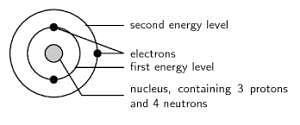Multiple Choice Questions (MCQs): Nomenclature of Elements - NEET MCQ
20 Questions MCQ Test Chemistry Class 11 - Multiple Choice Questions (MCQs): Nomenclature of Elements
Consider the following statements with respect to noble metals:
1. Noble metals are found in pure form in nature.
2. Uranium and lead are examples of noble metal.
1. Noble metals are found in pure form in nature.
2. Uranium and lead are examples of noble metal.
The element Y having atomic number 12 is
| 1 Crore+ students have signed up on EduRev. Have you? Download the App |
_______ is also known as ‘Oil of Vitriol’.
For IUPAC nomenclature of elements with atomic number greater than 100, the abbreviation used for digit zero is:
What is the relationship between the number of elements in each period and the number of atomic orbitals available in the energy level that is being filled?
Elements in the same group have same:
The electronic configuration of an element with atomic number (Z = 11) is 1s2, 2s2, 2p6, 3s1. The symbol of the element is:
The 3d transition series starts from which atomic number?
The lanthanide series starts with:
How many orbitals are filled in second period?
What is the principal quantum number for second period?
The first period has how many orbitals?
The elements beyond atomic number (Z = 92) are known as:
The last element of actinoid series is:
The maximum number of elements present in seventh period of the modern periodic table is:
The Latin word commonly used for the digit 9 is:
What is the maximum number of electrons that can be filled in 3d subshell?
Elements in the same vertical group of the Modern Periodic Table have same:
The distribution of electrons into orbitals of an atom is called its:
The symbol for element with atomic number 111 and name Unununium is
|
129 videos|238 docs|88 tests
|



















